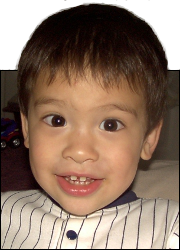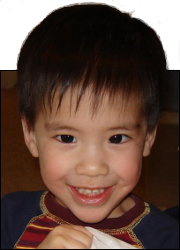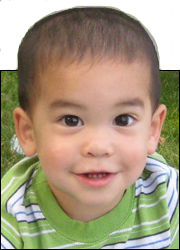Count to 31
Apr
2
2013
I recently had occasion to be scorekeeper for a kickball game. The usual scorekeeper advised me to have one team’s score on each hand and when the teams switch sides for kicking or fielding, then I was to swap hands so that the hand closest to that team had that team’s score.
It was an easy enough concept, but I have only 5 fingers on each hand so I was hoping for a low-scoring game. My backup plan, if the score went above 5, was to use sign language. I know enough ASL to be able to count to 10 on one hand.
The problem was the final score was 17-16. I had to count to 10 for each team and then I had to start back at one and remember to add 10.
After the game, I got to thinking of how I could have handled each team’s score on one hand. My solution for how to keep score with one hand?
Count in binary, using each finger as a bit.
For 5 bits, the maximum count is 31, so I can now handle a score of up to 31 to 31.
My recommendation is to use your left hand palm-down and your right hand palm-up so that the LSB is on the right, as it should be. I practiced, and I found that although the bits are in correct order if you use your thumb as bit 0, it’s harder to read. I keep my thumbs as bit 4 because I don’t have to move them as much that way.
Here’s a diagram:

The first pair of hands shows the standard binary form. The second pair of hands shows the decimal equivalent, for those familiar with the concept of places. Instead of 10s place, 100s place, 1000s place, etc., we have 1s place, 2s place, 4s place, 8s place, and 16s place.
| Bit | 4 | 3 | 2 | 1 | 0 |
|---|---|---|---|---|---|
| 0 | 0 | 0 | 0 | 0 | 0 |
| 1 | 0 | 0 | 0 | 0 | 1 |
| 2 | 0 | 0 | 0 | 1 | 0 |
| 3 | 0 | 0 | 0 | 1 | 1 |
| 4 | 0 | 0 | 1 | 0 | 0 |
| 5 | 0 | 0 | 1 | 0 | 1 |
| 6 | 0 | 0 | 1 | 1 | 0 |
| 7 | 0 | 0 | 1 | 1 | 1 |
| 8 | 0 | 1 | 0 | 0 | 0 |
| 9 | 0 | 1 | 0 | 0 | 1 |
| 10 | 0 | 1 | 0 | 1 | 0 |
| 11 | 0 | 1 | 0 | 1 | 1 |
| 12 | 0 | 1 | 1 | 0 | 0 |
| 13 | 0 | 1 | 1 | 0 | 1 |
| 14 | 0 | 1 | 1 | 1 | 0 |
| 15 | 0 | 1 | 1 | 1 | 1 |
| 16 | 1 | 0 | 0 | 0 | 0 |
| 17 | 1 | 0 | 0 | 0 | 1 |
| 18 | 1 | 0 | 0 | 1 | 0 |
| 19 | 1 | 0 | 0 | 1 | 1 |
| 20 | 1 | 0 | 1 | 0 | 0 |
| 21 | 1 | 0 | 1 | 0 | 1 |
| 22 | 1 | 0 | 1 | 1 | 0 |
| 23 | 1 | 0 | 1 | 1 | 1 |
| 24 | 1 | 1 | 0 | 0 | 0 |
| 25 | 1 | 1 | 0 | 0 | 1 |
| 26 | 1 | 1 | 0 | 1 | 0 |
| 27 | 1 | 1 | 0 | 1 | 1 |
| 28 | 1 | 1 | 1 | 0 | 0 |
| 29 | 1 | 1 | 1 | 0 | 1 |
| 30 | 1 | 1 | 1 | 1 | 0 |
| 31 | 1 | 1 | 1 | 1 | 1 |
There was war at Gath again, where there was a man of great stature who had six fingers on each hand and six toes on each foot, twenty-four in number; and he also had been born to the giant.
2 Samuel 21:20




This little article thingy was written by Some Guy sometime around 6:04 am and has been carefully placed in the Ponder category.

 This is Alpha, the first-born, when he was 2YO.
This is Alpha, the first-born, when he was 2YO. This is Beta, the second-born, when he was about 2YO.
This is Beta, the second-born, when he was about 2YO. This is Gamma, the third-born, when he was about 18MO.
This is Gamma, the third-born, when he was about 18MO.


April 2nd, 2013 at 8:34 pm
OR…learn ASL for all numbers up to 20. I’m sure you know somebody who could teach you :). Write one team name on each hand with a pen (don’t switch hands when the teams switch; having to switch hands would confuse me more). All that binary stuff makes my head swim!
OR…write it down on a piece of paper or your phone.